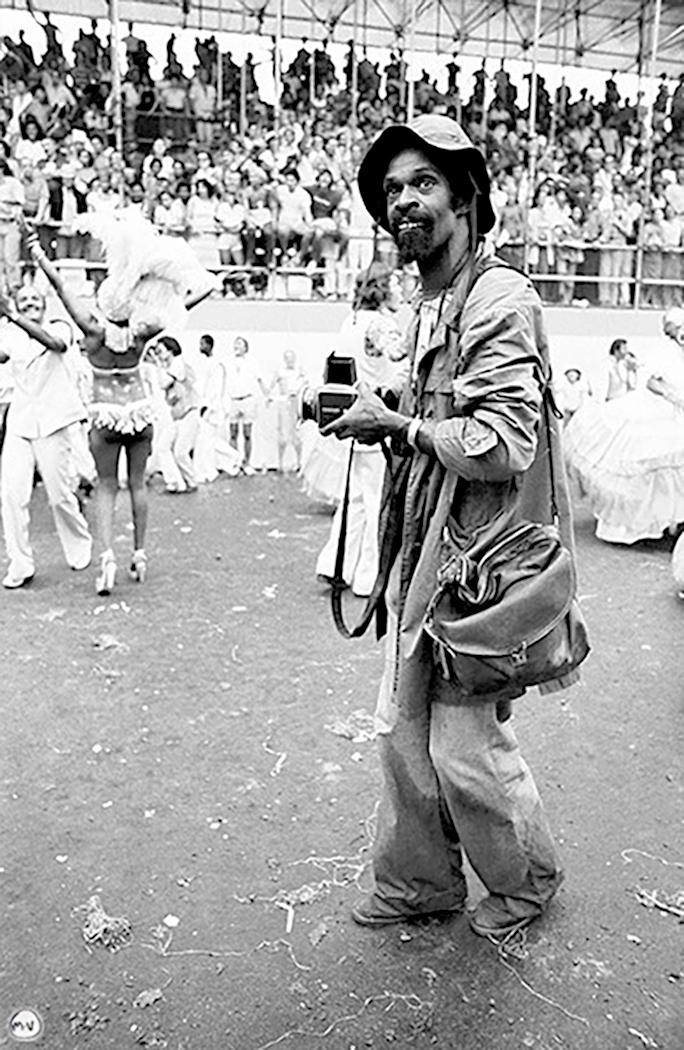Januário Garcia Jr. hailed from Minas Gerais, a Brazilian state renowned for its significant population of Afrodescendentes, or Black Brazilians. Born on November 16, 1943, into a modest family residing on the outskirts of Belo Horizonte, the state capital, Garcia embarked on a journey to Rio de Janeiro in search of a better life following the untimely passing of his mother, Geralda, when he was just 12 years old. Having lost his father years earlier, he navigated the streets of Rio independently and eventually made the city his home.
From a tender age, Garcia was captivated by still and print photography. In a manner reminiscent of author Carolina Maria de Jesus, who composed a diary using collected scraps of paper from the slums of São Paulo, Garcia gathered discarded film strips from the local cinema and projected them onto the walls of his childhood home in Minas. This early fascination paved the way for his training at the International Cameraman School in the early 1970s and marked the beginning of his lifelong career as a photographer.
A dedicated member of the Movimento Negro Brasileiro, a collection of social movements committed to empowering Afrodescendentes in Brazil, Garcia, inspired by African American activism in the 1960s, delved into learning English to better engage with the politics of the African diaspora by reading publications owned by Black individuals. In later years, he even received honorary citizenship in Atlanta, a prominent city renowned for African American culture and home to the National Black Arts Festival. Viewing his photography as an integral part of his activism, Garcia co-founded the Instituto de Pesquisas das Culturas Negras (Institute of Research into Black Cultures) in 1975, serving as its president for several years. His political convictions were heavily influenced by the ideas of Abdias Nascimento and Lélia Gonzalez. Nascimento, a prominent scholar, artist, politician, and author of “Brazil, Mixture or Massacre? Essays on the Genocide of Black People,” while Gonzalez, an academic, politician, activist, and advocate for the concept of Amefricanidade (the experiences of Latin America’s Black communities, particularly Black females).
Garcia’s political engagement became indissolubly intertwined with his art in 1976 when he began documenting Brazil’s Black populations through photography, shedding light on the invisibility they faced in representations of public spaces. Exhibitions such as “O Cotidiano do Afro-Brasileiro” (The Daily Life of the Afro-Brazilian) and “Nossa Gente” (Our People) exemplify his profound interest in capturing the everyday lives of Black individuals, seeking to bring about positive change within the Afrodescendente community through his portrayals. In December 2020, he commemorated the 1988 centenary of the abolition of Brazilian slavery with an exhibition titled “A Anticomemoração de um Centenário: o Levante do Movimento Negro pelo Olhar de Januário Garcia” (The ‘Anti-Commemoration of a Centenarian: the Uprising of the Black Movement through the Eyes of Januário Garcia’). This photographic collection documented the lead-up to 1988 within the Black Movement, highlighting grassroots activities like rallies and demonstrations that challenged racial discrimination in Brazil, a time when the prevailing narrative maintained that the country was racially democratic and the presence of a large mixed-race population negated the existence of racism.
Protesters who defied the state’s denial of racism faced suppression, which led to the marginalization of the Black community, the largest in the African Diaspora. Today, the increased representation of Afrodescendentes in Brazilian media stands as a testament to Garcia’s success as an artist who tirelessly campaigned through his work to bring images of Black people, who comprise more than 50% of the Brazilian population, from the periphery to the center stage.
With a personal collection of more than 100,000 photographs, Garcia established the Instituto Januário Garcia: Documentos e fotografias de Matrices Africanas (The Januário Garcia Institute: Documents and Photos of African Matrices) in 2016, thereby making his collection accessible to the public. That same year, he curated an exhibition titled “Rio de Todas as Áfricas: Diásporas Cariocas nas Lentes de Januário Garcia” (Rio of all Africas: Diásporas from Rio through the Lens of Januário Garcia).
Garcia’s prolific career included several book-length publications, including the co-authored “African Diasporas: A Bridge across the Atlantic” (2008), which was translated into French, English, and Spanish. He exhibited his photographs in various countries, including Togo, Mexico, and the United States. Although widely recognized within grassroots activism circles in Brazil, Garcia may be better known to the public for his iconic album covers designed primarily during the 1970s and ’80s for renowned Brazilian pop artists such as Caetano Veloso, Chico Buarque, Tim Maia, Leci Bradão, and Fafá de Belém.”
Januário Garcia died on June 30, 2021, from COVID-19.

